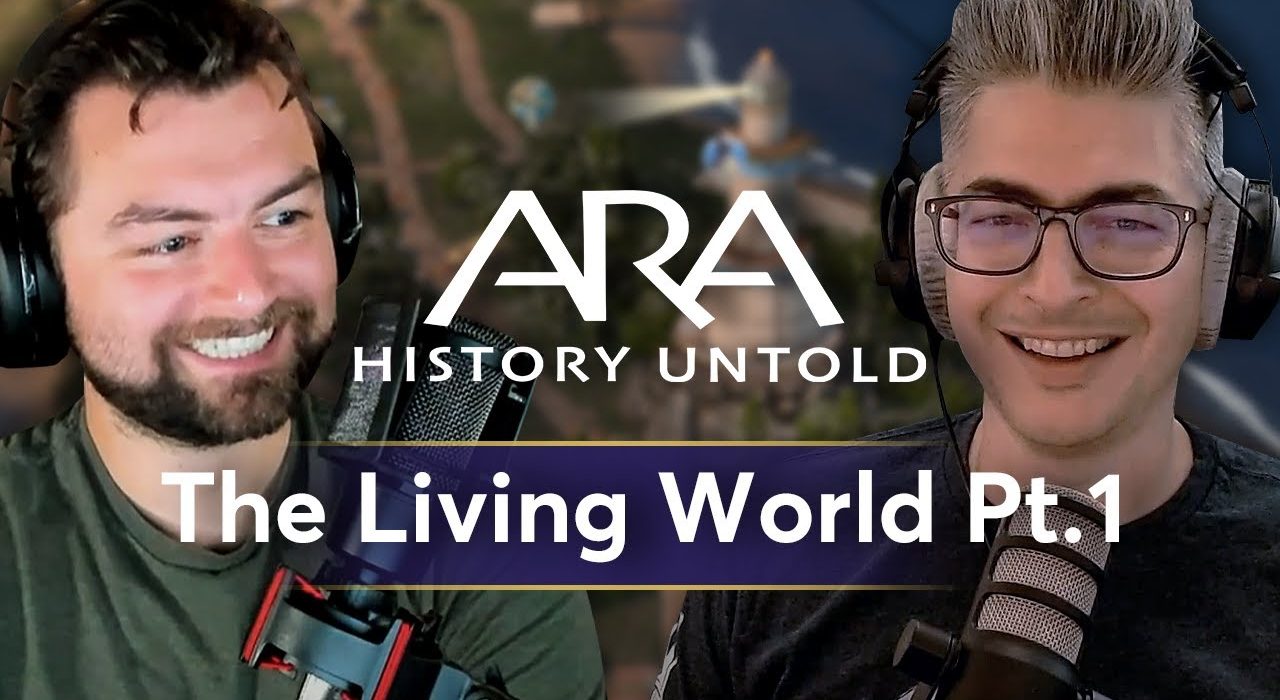As much as it resembles Civilization, the upcoming grand strategy game Ara: Untold Story is different in a few important ways. The most important might be its simultaneous turn resolution, which is detailed in one of the developers' Oxide Development DiariesI saw this a while ago, but somehow missed another important difference even though it appears in almost every screenshot: Ara's map is not divided into a regular grid or hexagonal pattern.
Instead, Ara's worlds are divided into irregularly shaped regions, as pointed out to me in a recent interview with Gabriela Leskur, Ara's director of narrative and experience, and Matt Turnbull, executive producer of publishing at Xbox Game Studios.
“I'm a big Risk fan, but we're not playing a board game, we're actually trying to simulate some of what we see in real life,” Leskur said. “One thing that's unique is that we have these dynamically generated regions. So they're not hexagons, they're irregular shapes based on things you see in nature. They're along rivers, along coastlines. They're unusual shapes that reflect how cartographers have done things in our history, and also the natural world itself.”
These regions are the land units that cities claim as they grow, and military forces occupy them one after another as they advance across the map. So in those contexts, regions function similarly to a regular grid, except that the size, shape, and number of sides vary. Things get more complicated when you get to the subregions called zones.
Leskur says to think of regions as pizzas. If you're moving troops, they move at a full pizza scale (from one region to the next), but land improvements are built at a slice scale, and like pizzas, regions aren't all divided into the same number of slices (i.e. zones).
“I think strategically as I expand my city,” Leskur said. “I do that by claiming nearby regions and asking myself, ‘Well, how many zones are in this region?’ If I want to build a really impressive Triumph, which is kind of like the Pyramids of Giza, I probably want to do that in a region that has only two zones — just two pizza slices cut straight in half — because I’m sacrificing the entire region to build that really impressive Triumph. Whereas, if I want to claim a region to use for farming, for as many upgrades as possible, I probably want a region with five or six pizza slices, because each of those zones is a place where you can build an upgrade.”
Another strategic consideration is the number of borders a region has, which determines how units can move. “Each hex is bounded by six squares,” Turnbull said. “And our regions in Ara are bounded by four, two or seven squares — it depends on the size, the shape, the natural features, whether there’s a coastline, whether there’s a river, whether there’s a sea — and all of those components also contribute to the intuition of the game, of world-building, of conquering territory and defending territory with armies.”
At the highest level, the decision to use regions instead of hexagons goes back to Leskur's comment about the goal of simulating a world rather than a board game. If you zoom in on a region, you'll be able to see “individual people waving at you” and animals appropriate to the region's biome running away from the cursor, giving it an interactive feel. (You can see some of that in the video above.)
And when you zoom in, “Does this look like a world or does it look like a board game I won?” Turnbull asks. “The answer we’re trying to get to is this looks like my world. I built this world. It’s mine now and it reflects the story I’ve told and the choices I’ve made.”
Oxide has gone deeper into this topic and many others (there's also a crafting system, for example) in the Ara: History Untold Official Website.
Despite all the work that has been done to educate grand strategy fans about the game, Ara strikes me as a bit of a wildcard. I'm not sure how it will be received. Civilization 7 Civ 7 is just around the corner, and it's been the focus of much more attention recently than Ara, which comes out this month. Taking big, obvious departures from Sid Meier's games seems like the right tactic, though. If it looks too much like Civ, audiences might decide to wait and see how Civ 7 turns out, but these quirks make me curious to see if Oxide has discovered anything exciting that Firaxis hasn't.
Ara: History Untold will be released on Steamhe Microsoft Storeand PC Game Pass on September 24. Despite being published by Microsoft, it’s only coming to Windows. (Civilization 7, on the other hand, will launch simultaneously on PC and consoles.)
